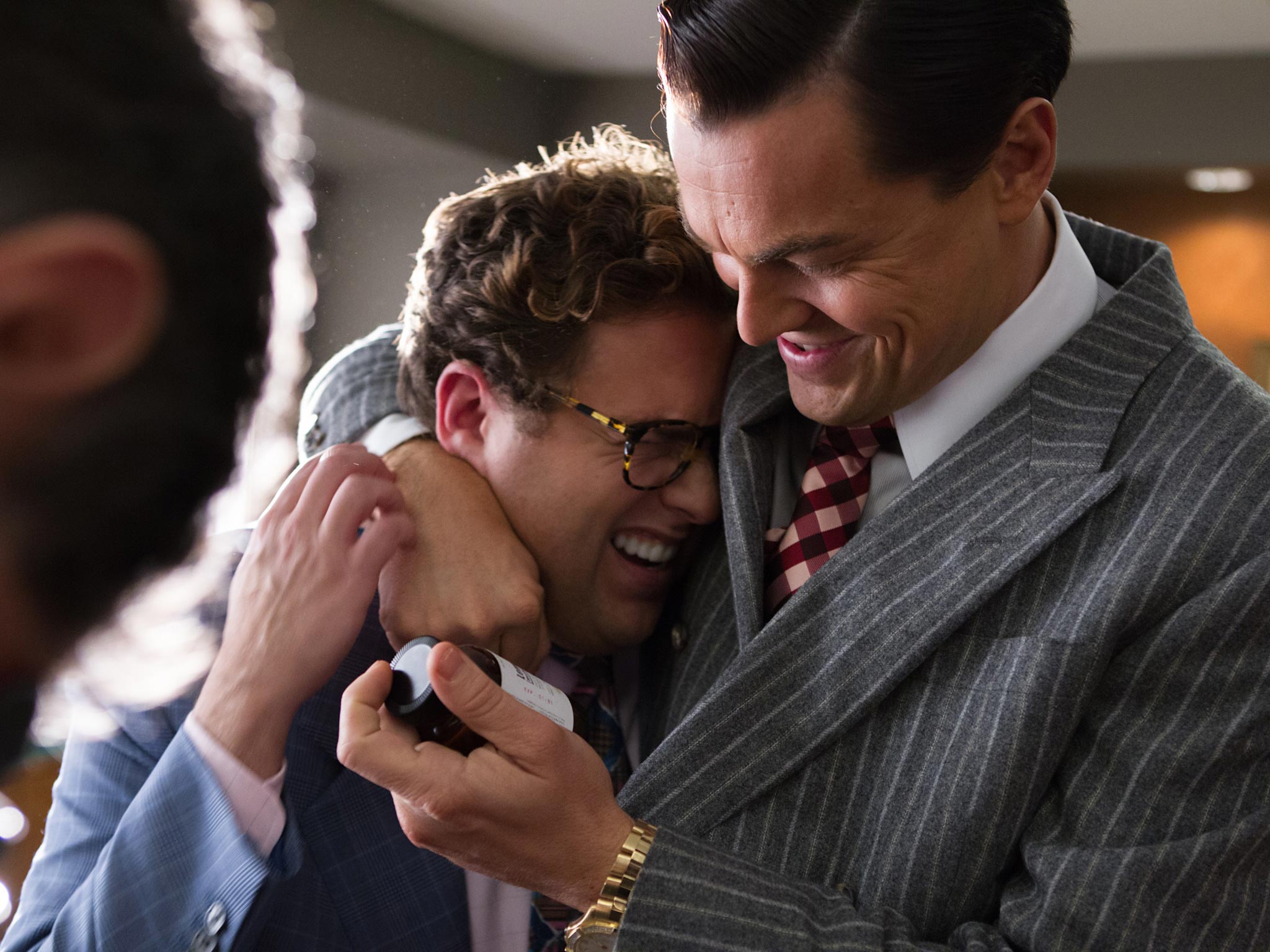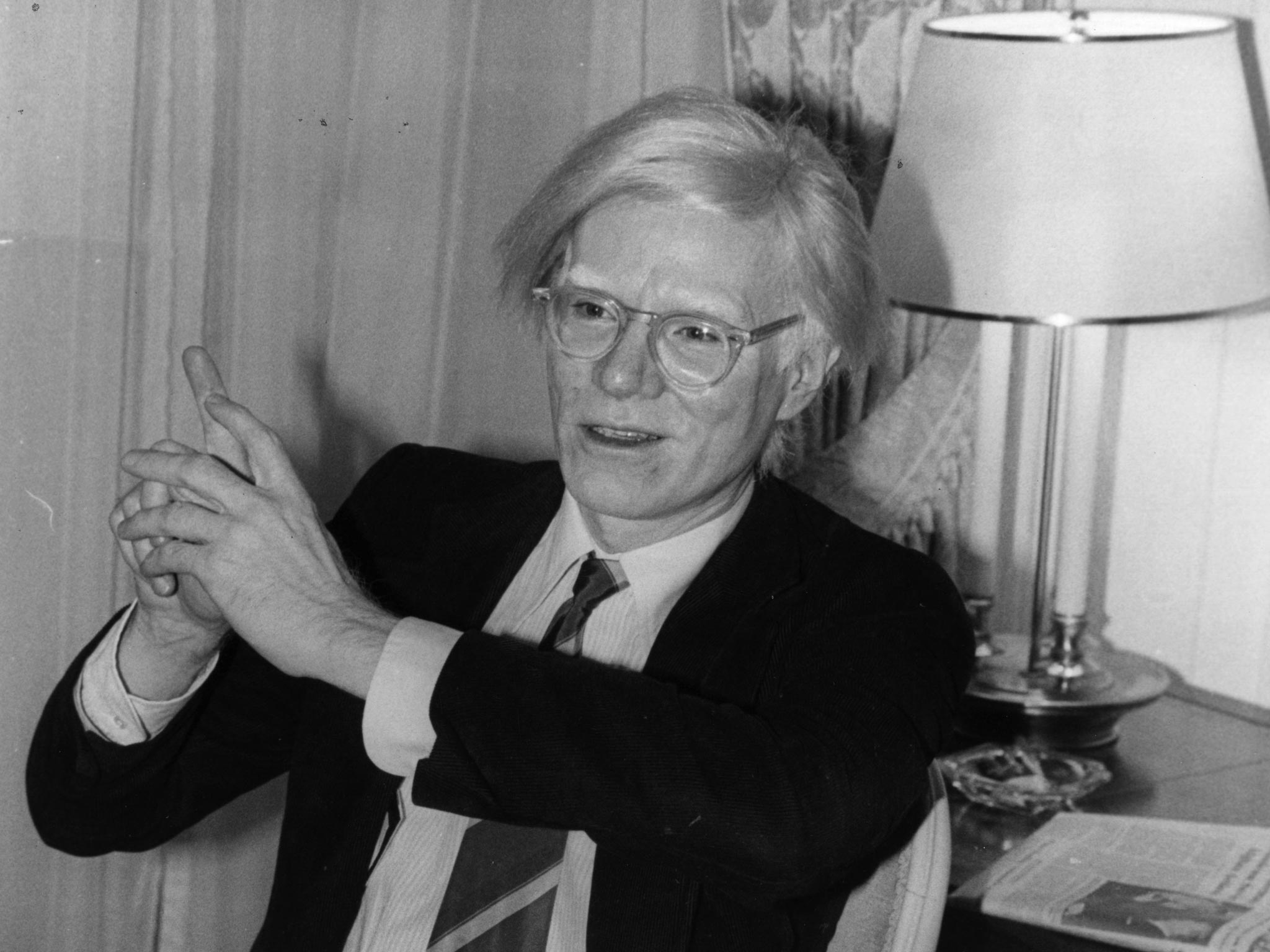Quaaludes: How the hero of Martin Scorsese’s The Wolf of Wall Street got high
Jordan Belfort – played by Leonardo DiCaprio - was addicted to the happy pills that fuelled the debauchery of the 1970s but finding pharmaceutical-grade Quaaludes in 2014 is virtually impossible

When Jordan Belfort - played by Leonardo DiCaprio in a truly masterful moment of full-body acting - wrenches himself from the steps of a country club into a white Lamborghini that he drives to his mansion, moviegoers - having already watched some two hours of Martin Scorsese's The Wolf of Wall Street - are meant to be horrified. His addiction to Quaaludes (and money, and cocaine, and sex, and giving motivational speeches) has rendered him not just a metaphorical monster but a literal one.
He lunges at his pregnant wife and his best friend, played by Jonah Hill, and equally high; he smashes everything in his path, both with his body and with the aforementioned Lamborghini. He gurgles and drools and mangles even monosyllabic words. He's Frankenstein's monster in a polo shirt. But what of the movie's glossier scenes? The one where Belfort and his paramour engage in oral sex while speeding down a highway? Where he and his friends and colleagues are on boats and planes and at pool parties, totally free of the inhibitions that keep most of us adhering to the laws of common decency? What about the parts that look fun?
Everyone I spoke to post-Wolf (at least, everyone who liked it) rapturously praised Terence Winter's absurd dialogue, DiCaprio's magnetism, Scorsese's eye for beautiful grotesquerie. Most of them also included a half-whispered, wide-eyed aside: what exactly are Quaaludes, and where can we get some?
Often prescribed to nervous housewives, a Quaalude was something between a sleeping pill and a sedative. First synthesised in the late Fifties, by 1965 'ludes were being manufactured by William H Rorer Inc, a Pennsylvania pharmaceutical company. The name "Quaalude" is both a play on "Maalox", another product manufactured by William H Rorer Inc, and a synthesis of the phrase "quiet interlude", a concept so simple and often so out of reach. Just whisper "quiet interlude" to yourself a few times. Seductive, no? It's the pill in the "take a pill and lie down" directive that thousands of Don Drapers gave their Bettys.
Of course, housewives have children who grow into curious teenagers, and medicine-cabinet explorations led the children of boomers to discover a new use for the drug. Most sedatives are designed to take you away within 15 minutes, but - as Belfort explains in a lengthy paean to 'ludes - fighting the high leads one into a state almost universally described as euphoria.
"It was hard to imagine how anything could feel better than this. Any problems you had were immediately forgotten or irrelevant," says one person who came of age when 'ludes were still floating around. "Nothing felt like being on Quaaludes except being on Quaaludes."

William James, the American philosopher and psychologist, thought the world was made up of two halves: the healthy-minded, or those who could "avert one's attention from evil, and live simply in the light of good... quite free of one's melancholy self", and the sick-souled, or morbid-minded, "grubbing in rat-holes instead of living in the light; with their manufacture of fears, and preoccupation with every unwholesome kind of misery, there is something almost obscene about these children of wrath."
In the end, to be of morbid mind is, according to James, the better option - the harsh realities that the healthy-minded cheerily repel "may after all be the best key to life's significance, and possibly the only openers of our eyes to the deepest levels of truth". Still, it's not easy, being a sick soul. James is one of the first people to pop up in a search of "neurasthenia", the catch-all term for those who suffered from nervousness, exhaustion and overthinking in the 19th century.
Maybe William James needed a quiet interlude. Maybe something like a Quaalude; something that makes you feel like yourself without any of the stress of actually being yourself, can be - for a healthy mind looking to spice up a Saturday night - something that enhances dancing and drinking and sex and honesty. But for someone like Jordan Belfort, whose desires beget more desires until he isn't sure whether they're real or if he's wanting just to want, Quaaludes were probably more an occupational necessity than a recreational getaway.

Watch Apple TV+ free for 7 day
New subscribers only. £8.99/mo. after free trial. Plan auto-renews until cancelled.
ADVERTISEMENT. If you sign up to this service we will earn commission. This revenue helps to fund journalism across The Independent.

Watch Apple TV+ free for 7 day
New subscribers only. £8.99/mo. after free trial. Plan auto-renews until cancelled.
ADVERTISEMENT. If you sign up to this service we will earn commission. This revenue helps to fund journalism across The Independent.
To stay home feeling ecstatic was one thing, but imagine being out! Music! Lights! Sweaty, writhing bodies! Of course, Quaaludes were at the centre of the Seventies disco movement. Manhattan was littered with "juice bars" - nightclubs where no alcohol was sold but Quaaludes could be had for a song. (Speaking of songs, here's an incomplete list of musicians who wrote songs referencing 'ludes: David Bowie, Iggy Pop, Cheap Trick and The Tubes, whose lead singer's stage character was called Quay Lewd.) As with all fashionable drugs, Quaaludes make countless appearances in the diaries of Andy Warhol who, for the sake of verisimilitude and sheer meanness, took great pleasure in documenting the rumoured quantities ingested by his Studio 54 chums... January 3, 1978: "Liza said to Halston, ‘Give me every drug you've got.' So he gave her a bottle of coke, a few sticks of marijuana, a Valium and four Quaaludes."

Liza and Halston, of course, need no further introduction. They are the shiniest stars in a room too shiny for most of us to even imagine. They are at the peaks of their respective professions. Studio 54 is the most important place in the most important city in the most important time the world has ever known, and they are its royals. But they can't dance without Quaaludes.
What happened in New York City nightclubs was just a more moneyed version of what was happening in suburban living rooms, and the lust for 'ludes was no exception.
By the early Eighties, though, the supply was running low " in 1978, Rorer sold Quaaludes to the Lemmon Company, which continued to market them as a sleeping aid, even as the DEA was cracking down on street sales and quack doctors who would, for the paltry sum of 50 bucks, write anyone who walked in off the street a prescription for "714s", so termed for the number stamped on each pill.
For those too young or too far away from New York, I'm told: "They were always very hard to get " I assumed that most of them came from people who robbed pharmacies or raided parents' medicine cabinets, or they were stolen from medicine cabinets in burglaries. I remember paying a very pricey $8 each for them. I knew a guy who used to steal them from his mom, who was dying of cancer."
There are uglier moments. One person I talked to sheepishly admitted that Quaaludes were something you gave girls to "loosen them up" " to get them to say yes to anything. Roman Polanski reportedly gave a Quaalude to his 13-year-old victim that night in a Hollywood Jacuzzi. On first reading this story, in a nail-salon copy of Vanity Fair 10 years ago, I assumed that all the drugs available to rich LA filmmakers in the early Seventies were pretty much the same. Now I know that's not the case.
In Bunny Tales: Behind Closed Doors at the Playboy Mansion, Izabella St James, Hugh Hefner's former live-in girlfriend, says that every night out was prefaced with an offer of 'ludes from Hugh. The later descriptions of post- nightclub sex parties " I'll spare you the gory details, but there are some depressing references to unintended uses of baby oil " make much more sense knowing that the participants would've been feeling the euphoria and increased sexual desire that the drug can create.

If you Google "what drug is most like Quaaludes", the answer that most often pops up is Ambien, a prescription sleep aid made famous for its other effects by golf superstar/sex addict Tiger Woods. Much as with Quaaludes, fighting the sleep-inducing effects of Ambien can send one into a state of decreased inhibition, heightened libido and lucid hypnosis. It's when I read this that I realise what I was grasping for during Belfort's explanation of the Quaalude high " "I've been here before". I have a (very sparingly used) prescription for Ambien " insomnia is, I think, a plague suffered by all morbid minds " and I always take it meaning to go directly to sleep, to drift away into the good night, but once in a while something distracts me and I've passed the 15-minute window into a curious netherworld where I am wholly myself; perhaps too much myself.
A cursory search through my emails turns up notes sent to old boyfriends; to people to whom I no longer speak; to people to whom I do speak, just not particularly frankly. My sentences in these notes are coherent, sometimes even lyrical, and the words are funny, direct, revealing. In the morning, I have hazy memories of these exchanges and feel not the embarrassment one feels after a night of too many drinks and too many sloppy "It was the booze, I swear!" moments, but the embarrassment of having revealed thoughts and feelings I'd otherwise expect the civilised part of my brain to keep locked up. I might not have danced, like Liza did, or spent ungodly sums of money on a domineering prostitute named Venice, like Jordan Belfort did, but my own morbid mind does, in its way, understand the appeal.
Despite one person's assertion that he could have Quaaludes in my hand by the end of the day (hypothetically, of course " he refused, and I'd probably be too scared anyway), finding pharmaceutical-grade Quaaludes in 2014 is virtually impossible. Lemmon, citing bad publicity, ceased manufacturing the drug in 1983, and by 1984 President Ronald Reagan had signed into law a ban on the production and sale of prescription Quaaludes. That doesn't mean that people didn't still get them " plenty were left over from the three decades in which they'd been legal, and really, wasn't it easier to just call a guy than bother with a doctor? Amateur chemists, too, tried (and still try, mostly in South Africa, where street-manufactured Quaaludes account for a startling percentage of the drug trade) to replicate the original, often using Valium and other milder sedatives to capture a fleeting bit of the Quaalude high.
More than anything, though, 'ludes simply fell out of fashion, becoming a historical oddity. People who are now responsible parents took them in the Seventies. Hugh Hefner still does, maybe. I don't know a single person under 30 who has seen one.

The Wolf of Wall Street is as much about addiction as anything else. In a scene near the film's end, Jonah Hill's character, Belfort's best friend and partner in crime, visits his ankle-monitor-wearing comrade at the Long Island mansion that Belfort will have to mortgage in order to pay his mounting legal fees.
Addiction narratives in which the protagonist survives often see the hero praise the light, expressing a new-found joy in living clean; in living healthy-minded. Hill's character, joining the now-Quaalude-free Belfort by the pool to sip non-alcoholic beer, asks what it feels like to be sober. His face is genuinely curious " if I had to decide, I'd call Hill's Donny Azoff a sick soul, and it's easy to imagine him wondering if it's possible to get to the quiet interlude without chemical assistance.
There's a pause.
"It f**king sucks, man," says Belfort. "It really f**king sucks."
Angela Serratore is the deputy web editor at ‘Lapham's Quarterly'. This article originally appeared on The Paris Review Daily, the literature magazine's culture blog at theparisreview.org/blog